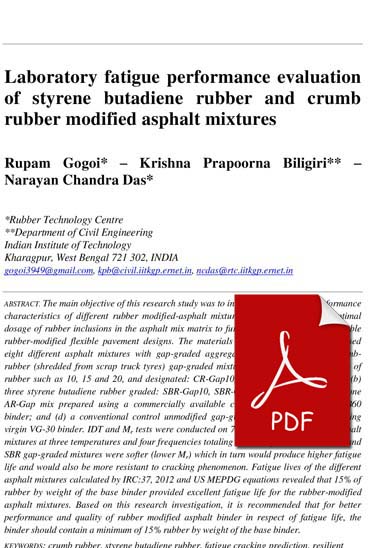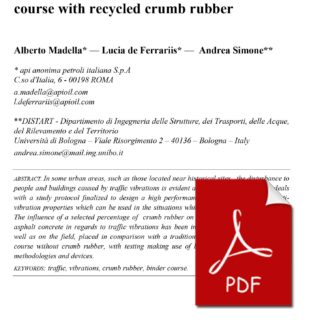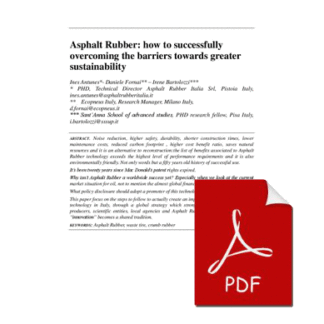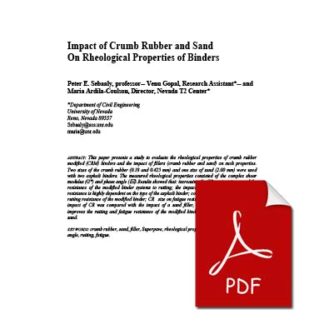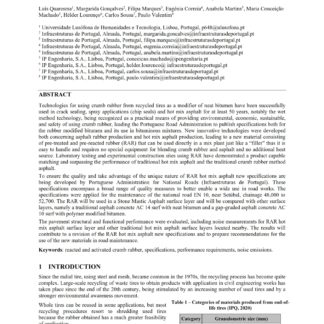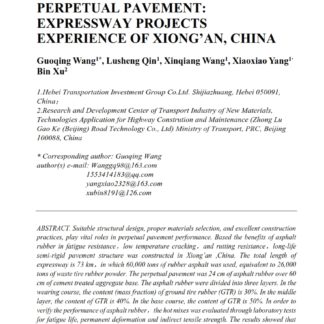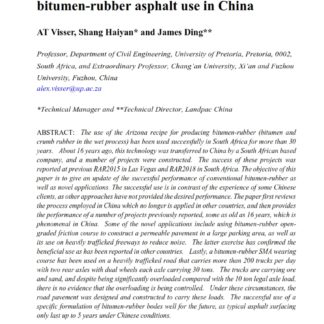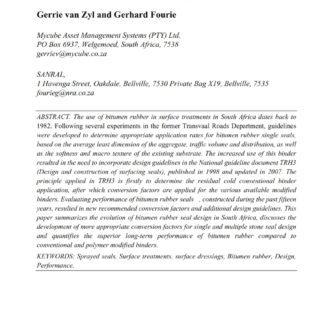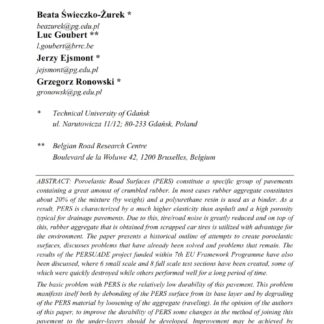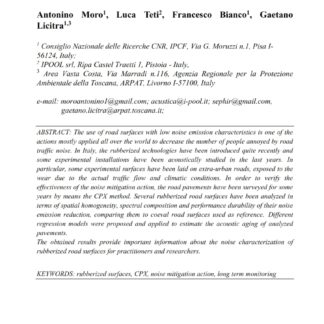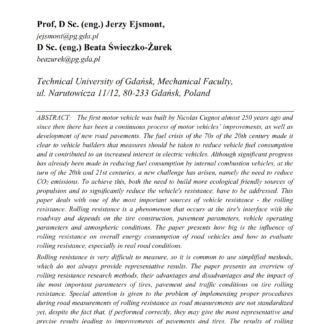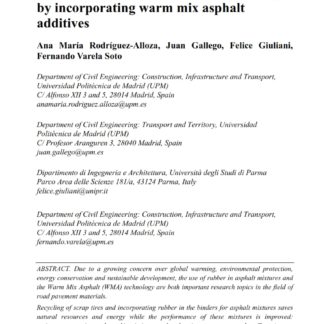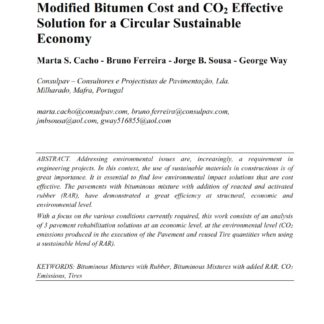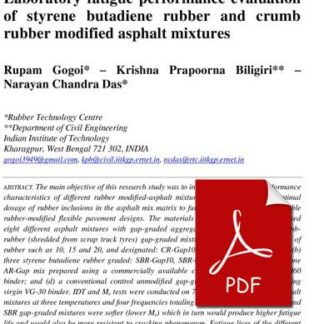Description
The main objective of this research study was to investigate the fatigue performance characteristics of different rubber modified-asphalt mixtures, and recommend the optimal dosage of rubber inclusions in the asphalt mix matrix to further use in futuristic sustainable rubber-modified flexible pavement designs. The materials used in the study encompassed eight different asphalt mixtures with gap-graded aggregate gradation: (a) three crumbrubber
(shredded from scrap truck tyres) gap-graded mixtures with varying percentages of rubber such as 10, 15 and 20, and designated: CR-Gap10, CR-Gap15 and CR-Gap20; (b) three styrene butadiene rubber graded: SBR-Gap10, SBR-Gap15 and SBR-Gap20; (c) one AR-Gap mix prepared using a commercially available crumb-rubber modified CRMB60 binder; and (d) a conventional control unmodified gap-graded mix called AC-Gap using virgin VG-30 binder. IDT and Mr tests were conducted on 72 samples covering eight asphalt mixtures at three temperatures and four frequencies totaling 288 data points. Overall, CR and SBR gap-graded mixtures were softer (lower Mr) which in turn would produce higher fatigue life and would also be more resistant to cracking phenomenon. Fatigue lives of the different asphalt mixtures calculated by IRC:37, 2012 and US MEPDG equations revealed that 15% of rubber by weight of the base binder provided excellent fatigue life for the rubber-modified asphalt mixtures. Based on this research investigation, it is recommended that for better performance and quality of rubber modified asphalt binder in respect of fatigue life, the binder should contain a minimum of 15% rubber by weight of the base binder.

